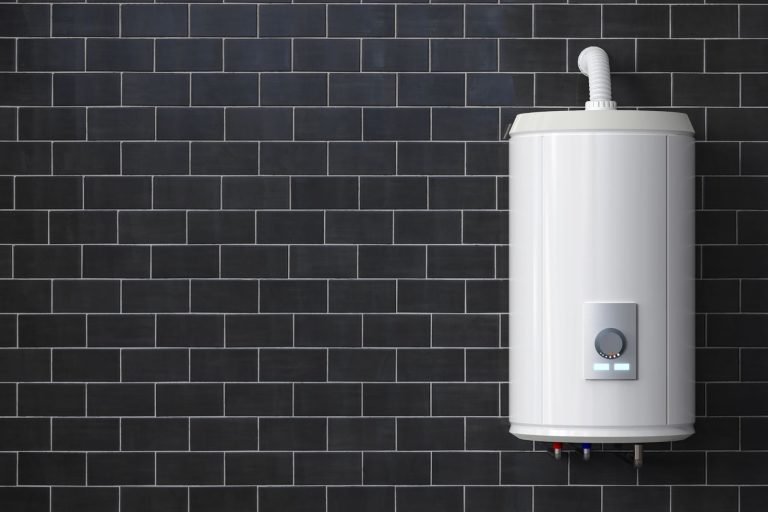Experiencing issues with your Worcester boiler? You’re not alone. Many homeowners are puzzled when their heating system starts acting up, especially during the colder months when a warm home is essential.
A common culprit behind such troubles? Low boiler pressure.
This article will guide you through simple steps to safely increase your boiler’s pressure whether it has an external filling loop, a keyed internal one or even a keyless system. We’ll also look into other methods that can help maintain optimal pressure levels within your heating system.
Let’s get started.

Key Takeaways
- Keeping your Worcester boiler pressure between 1 and 1.5 bars is vital for efficient heating and hot water supply.
- If the pressure is too low, you can repressurise your boiler using an external filling loop, a keyed internal loop, or a keyless system.
- Regularly check for leaks in your system to prevent low boiler pressure.
- Bleeding radiators help remove trapped air, improving the system’s pressure and heating efficiency.
- Always consider getting help from a professional if you’re unsure about any steps in the repressurisation process.
Understanding Boiler Pressure
Understanding boiler pressure is crucial for efficient operation. Low pressure can lead to heating and hot water issues.
Boiler pressure keeps hot water moving around your home. It ensures that radiators heat up properly and taps provide hot water. Proper pressure makes sure the system is efficient, saving energy and money.
If the pressure is too low, your heating might not work well. This means cold radiators and no hot showers. Keeping an eye on the water pressure gauge can help you spot problems early.
Symptoms of low boiler pressure
Maintaining the right boiler pressure is crucial for your home heating to function efficiently. A drop in this pressure can lead to several noticeable signs. You might see that your radiators take longer to heat up or don’t get as hot as they should.
Your boiler’s hydraulic dial or digital reading could show a number lower than one bar, indicating insufficient pressure. Sometimes, there may be no heating or hot water at all, making it quite uncomfortable during colder months.
Additionally, the boiler might cut out completely or display error messages, signifying it needs immediate attention to avoid further issues like increased energy consumption and potential damage.
Causes of low boiler pressure
Low boiler pressure can happen for several reasons. A leak in the system is a common cause, possibly due to a problem with pipes, radiators, or the boiler itself. Over time, these parts can wear out or get damaged, leading to water escaping and pressure dropping.
Another reason could be recent work on the heating system, such as bleeding radiators or repairing parts. This process can sometimes let air into the system and lower the water level inside.
It’s essential to check for any signs of leaks and have repairs done quickly by a qualified heating engineer to maintain your Worcester Bosch Group combi boilers’ efficiency.
How to Repressurise a Worcester Boiler
To repressurise a Worcester boiler, you can use the external filling loop, internal filling loop (keyed), or keyless internal filling loop. These methods help restore the correct pressure for your boiler to function efficiently.
Using the external filling loop
First, locate the external filling loop beneath the boiler. This flexible hose connects two water pipes and plays a crucial role in repressurising your Worcester boiler. Ensure both ends of the loop are securely attached to maintain safety throughout the process.
Next, slowly open the valve on the loop. Watch the pressure gauge rise until it reaches between 1 and 1.5 bars, indicating ideal boiler pressure. Once achieved, close the valve firmly to prevent any leaks.

Now you’re ready to move on to using an internal filling key or a keyless internal option for further adjustments if necessary.
Using the internal filling loop (keyed)
To repressurise a Worcester boiler using the internal filling loop with a key, locate the key slot under the boiler. It’s usually hidden behind a panel or flap. Carefully insert the provided key into the slot, ensuring it fits securely.
Turn the key gently to unlock the internal filling mechanism. This action opens up a valve inside, allowing water to flow through and increase pressure.
Watch the pressure gauge closely as it rises. Aim for around 1 to 1.5 bar, which is often marked in green on most models including Greenstar system filters and A-rated condensing boilers.
Once you reach this desired pressure, turn back and remove the key to lock everything in place again carefully so that no water leaks out during the operation of your energy-saving appliance.
Using the keyless internal filling loop
Moving on from the keyed option, the keyless internal filling loop offers an easier method to increase your boiler’s pressure. Locate the filling link without a key under your boiler’s panel.
Turn it slowly to allow water into the system until you reach the ideal pressure level marked on your Worcester boiler’s gauge. Ensure you don’t overshoot this mark as too much pressure can harm your boiler.
After hitting the target pressure, securely close off the valve. Check around for any leaks. If everything looks fine, restart your Worcester boiler using the reset button if necessary.
Regular checks help maintain optimal performance and energy saving, aligning with advice from the Energy Saving Trust and ensuring you’re not running a less efficient G-rated boiler unnecessarily.
Three Methods for Increasing Boiler Pressure
Manual pressure relief valve adjustment
To adjust the manual pressure relief valve, first locate it on your Worcester boiler. This is crucial for safely managing the pressure within your system. Turn the valve slowly to release any excess pressure until you reach the optimal level indicated in the manufacturer’s booklet.
Always proceed with caution and wear protective gloves to prevent burns from hot water.
Check the boiler’s pressure gauge after adjusting it to ensure it falls within the recommended range. If unsure about this process or if problems persist, seek advice from a Worcester-accredited installer.
Filling the boiler via the filling loop
To adjust the boiler pressure, another method is to fill the boiler via the filling loop. This can be done by connecting the filling loop to the system and opening both valves to allow water from the mains to enter.
Monitor the pressure gauge as you do this, ensuring it reaches the recommended level before closing off both valves.
After completing this process, it may be necessary to bleed radiators to balance the system pressure throughout. By doing so, you can ensure that your Worcester boiler operates at an optimal pressure for efficient heating.
Bleeding radiators to increase pressure
To increase boiler pressure, bleeding radiators are an effective method. Start by turning off the heating system, then use a radiator key to slowly open the bleed valve at the top of each radiator.
As air escapes and water starts to flow steadily, close the valve immediately. Once all radiators are bled, check the boiler pressure gauge – it should have risen within the recommended range between 1 and 1.5 bar.
This simple process helps remove trapped air from radiators, allowing hot water to circulate freely and consequently increasing the overall system pressure. Regularly bleeding radiators not only maintain optimal pressure but also ensure efficient heating throughout your home.
Additional Tips and Resources
Seek professional advice if the repressurisation process seems challenging. Explore other blog posts for more helpful tips and guidance.
Getting advice from a professional
Contact a qualified heating engineer or boiler service professional for expert advice on troubleshooting your Worcester Boiler. They can diagnose any underlying issues, provide maintenance tips, and ensure that your boiler operates efficiently and safely.
Seeking professional guidance can help you avoid potential damage to the appliance and save money in the long run by addressing problems promptly.
Other helpful blog posts
Understanding the Unboil Setting on Your Thermostat
Is Your Vaillant Boiler Constantly Firing Up? Here’s What to Do
Final thoughts
Repressurising the boiler using external or internal filling loops, as well as bleeding radiators, are practical methods that can be easily implemented.
Have you considered seeking advice from a professional or exploring helpful resources to ensure your boiler’s optimal performance? By addressing low boiler pressure promptly, you can prevent potential damage and ensure uninterrupted heating.
Take action today to repressurise your Worcester boiler effectively and enjoy a warm and comfortable living space throughout the year!

























